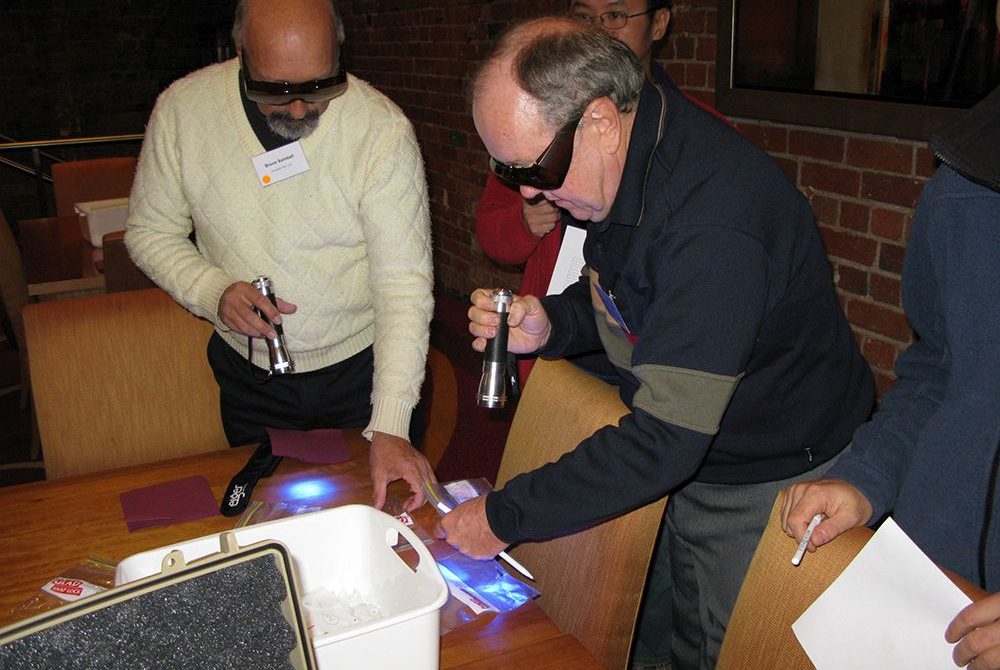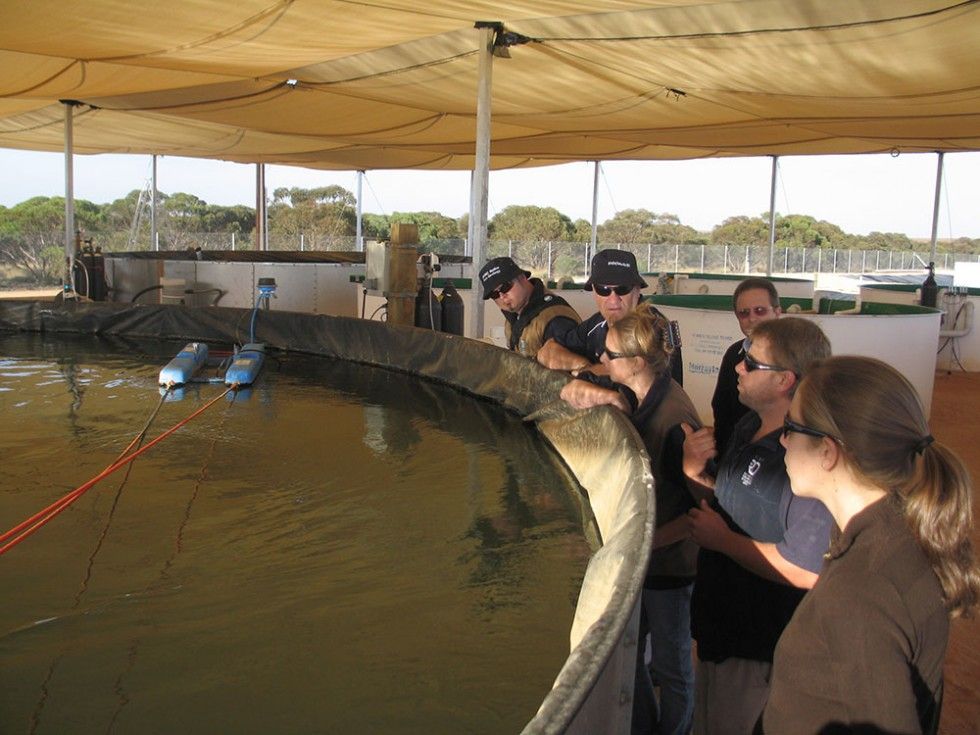The driving actions and objectives of the NFS encompassed the management of fish translocation and stocking, to protect native fish from any potential adverse effects of such activities. The findings of a 2002 workshop Managing fish translocations and stocking in the MDB informed the identification of relevant NFS actions, with NFS representatives subsequently providing input to jurisdictional hatchery protocols.
The NFS recognised the need to engage with the aquaculture industry, to increase connections and gain a better understanding of each other’s perspectives. To help achieve this, the CST included an aquaculture representative, who provided invaluable input to the NFS through participating in many engagement activities such as NFA weeks, tours and forums and linking with relevant research projects.
The NFS funded two projects with specific relevance to the aquaculture industry. The first project investigated methods for discriminating stocked, hatchery fish from wild fish. Large numbers of hatchery bred native fish have been stocked in rivers and impoundments in the MDB. Although stocking is a key tool for managing inland fisheries, there was a limited knowledge of the fate of these fish. This NFS research project developed methods to mark hatchery fish with chemical tags to help inform monitoring programs and was followed by field trials. A range of extension and communication activities were undertaken during this project, including seminars at forums and conferences, radio interviews and visits to hatcheries to discuss the project and demonstrate the techniques. Importantly, a two day stakeholder workshop was held, with over 40 stakeholders including hatchery operators, recreational fishing representatives, scientists and NRM managers. The CST aquaculture representative facilitated this workshop, which proved a valuable opportunity to disseminate information and train operators in the chemical marking techniques. This project incorporated recommendations for the future implementation and regulation of chemical marking of fish, recognising the need to continue engagement with stakeholders and further investigate practical issues such as costs, logistics and record keeping. Large scale calcein marking of hatchery fish has commenced within the Basin and there is broad recognition of its value amongst managers, however there are a range of issues associated with its practical implementation that continue to be addressed.


The second project of relevance to aquaculture investigated whether threatened hatchery-reared stocked fish could be trained to avoid predators and recognise natural food sources to increase survival. The results were positive and some hatcheries have shown an interest in these findings to produce better adapted fingerlings. Engagement approaches within this project included a questionnaire sent to over 80 private and government hatcheries and grow out facilities in eastern Australia. The results of this work were also promoted through magazine articles (Austasia Aquaculture Magazine) and the Angling for Conservation website. The results were also presented at the Annual General Meeting and Conference of the Aquaculture Association of Queensland (AAQ). Now that the project report is published on-line, the link to the report has been made available to AAQ and other organisations with links to the hatchery or aquaculture industry. The Principal Investigator of this project has indicated to hatchery operators that he is willing to provide training in methods used to condition fingerlings to predators.
Across the Basin, there were also instances of hatcheries breeding and holding threatened species for use in restocking and translocation activities associated with broad aquatic rehabilitation. This has involved hatcheries, NRM and fisheries managers and scientists working together for a common goal. Examples include Narrandera Fisheries Centre working with NSW DPI to release southern pygmy perch and olive perchlets into Thegoa Lagoon and Washpen Creek , Macquarie perch into the Retreat River and purple spotted gudgeon into Gulligal Lagoon.
There were also instances where aquaculture facilities assisted with carp disposal during particular Carp muster events.
